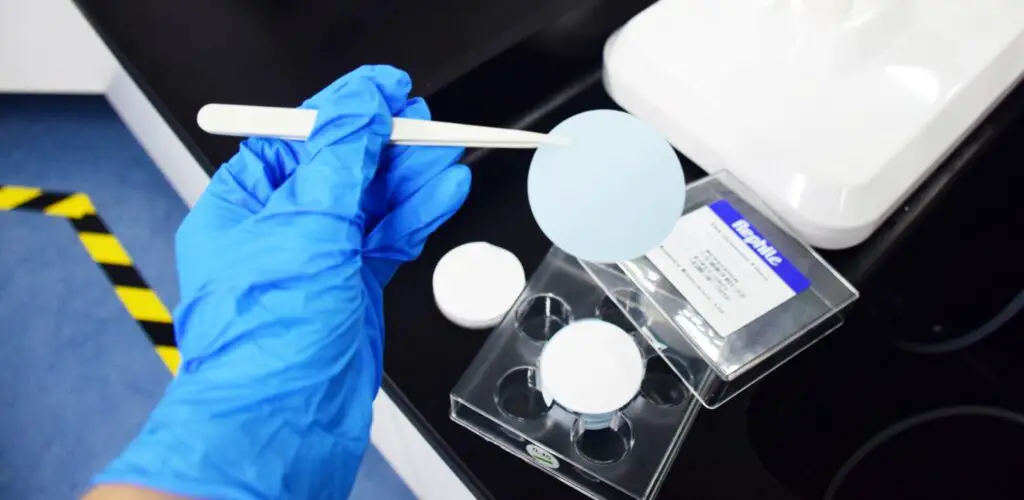
Key points
- Most skin rashes are caused by a sensitive reaction to various irritants. In dogs, rashes most commonly appear on the head, groin, belly, chest, and hips. In most cases, groin rashes are not dangerous to dogs and usually resolve on their own.
- Dogs can suffer from different types of rashes, including flea allergy dermatitis, puppy pyoderma, hot spots, and atopic dermatitis. Usually, a rash on a dog’s groin will look similar to pimple-like lesions.
- The most common causes of canine rashes include allergies, fleas, ticks, or mites. Dogs can also develop heat rashes and skin conditions caused by ringworms, poor diet, yeast infections, poisonous plants, hormone imbalance, bacterial infections, excessive licking or chewing of the skin, and genetic conditions.
- The treatment of a rash will depend on its cause, but it can include a hypoallergenic diet, topical ointments, and different medications.
Seeing a rash on your dog’s belly and groin could be startling and frightening, even though this skin condition is latively common in dogs. Most pet owners who encounter canine rashes for the first time jump to conclusions and start worrying about their pet’s health. However, most of the time, rashes aren’t dangerous for dogs. The causes of this skin condition may vary, and a rash can be caused by something as innocuous as a minor infection or allergic reaction or as severe as Cushing’s disease.
Therefore, it’s essential to find out what’s causing the rash on your dog’s groin as soon as you notice the issue. That way, you’ll eliminate the risk of the rash transforming into a severe condition that will require veterinary care or even hospitalization. And if the inflammation is minor and doesn’t bother your dog, the pet likely won’t need any special treatment, and the rash will disappear on its own.
Keep on reading if you want to find out more about what can cause a rash and how to identify it. We’ll also provide some tips on treating groin rashes in dogs correctly.
Table of Contents
Types Of Dog Rashes
Just like us, our furry friends can get different types of rashes. A rash is an identifying symptom for most canine allergies. Rashes can appear all over a dog’s body, but the most likely areas to be affected are the dog’s head, groin, belly, chest, and hips.
Here are the most common types of rashes in dogs:
Flea Allergy Dermatitis
As the name suggests, flea dermatitis is a disease caused by fleas. The best way to treat this condition is to prevent it from happening in the first place by giving your dog preventive flea treatment regularly. This will allow you to minimize the risk of this problem.
Puppy pyoderma
When dogs are young, they are more likely to get different bacterial infections in their groin and armpits. Generally, these rashes aren’t dangerous and go away on their own as the dog ages. However, if you see that the inflammation is causing discomfort to your pup, you should take it to a vet. The specialist may recommend using an antibiotic ointment, antiseptic wash, or oral antibiotics to clear up the rash.
However, if the rash becomes severe, it will need to be treated with topical prescription treatments, oral medications, and special shampoos to alleviate the symptoms and get rid of the rash.
Atopic Dermatitis
Atopic dermatitis is a skin reaction to environmental allergens. The most common allergens that cause this condition include pollen, mold spores, and dust mites. This condition can develop not only in the groin area but also around the eyes. If your pet is suffering from this disease, try to find out the allergen that’s causing the rash and eliminate it from your pet’s environment.
Hot spots
Hot spots will appear if your dog frequently chews or licks its skin. The causes can include physical irritants such as infections, flea bites, wounds, laying on hard floors, and emotional factors such as boredom or poor grooming.
Symptoms Of Canine Groin Rashes
Rashes on your dog’s groin area can take on different appearances, but the most common type is pyoderma, which looks like a group of pimple-like lesions on the skin. If your pup develops this condition, it will continuously scratch the affected area. The skin on and around the rash may also become dry, scaly, or crusty because of the irritation. Sometimes, hair follicles may also become impacted, which can cause hair loss in the areas of the rash.
If the rash is infected, you’ll notice that the skin looks inflamed and weepy, and there may be an odd odor coming from the affected area. Fungal infections will create circular patterns in the lesions.
Most Common Causes Of Groin Rashes In Dogs
 In any animal, the main function of the skin is to protect the body from the environment. Thus, all rashes are essentially caused by the skin reacting to a particular irritant or changes in the environment.
In any animal, the main function of the skin is to protect the body from the environment. Thus, all rashes are essentially caused by the skin reacting to a particular irritant or changes in the environment.
In most cases, groin rashes in canines occur due to contact dermatitis, which is brought about by your dog being in contact with harsh irritants such as poison ivy or chemicals. In these cases, the rash usually isn’t severe and will clear up without medical treatment. However, you can wash the affected area with water to clean and soothe the irritation to expedite the process.
Other common causes of rashes in dogs include:
- Pollen, insect bites, bee stings, etc. which cause allergic reactions;
- Fleas, ticks, or mites;
- Heat rash (occurs when your dog is overheated and the skin becomes itchy, red, and very sensitive);
- Yeast infection;
- Poisonous plants such as poison ivy, poison sumac, or poison oak;
- Ringworm;
- Endocrine disorders (hypothyroidism or Cushing’s disease);
- Bacterial infection;
- Poor diet;
- Excessive licking or chewing of the skin;
- Genetic factors.
Some Dog Breeds Are More Prone To Groin Rashes
A dog of any breed can experience a groin rash. However, some breeds such as American and English Bulldogs are more likely to get rashes in general, meaning they are also more prone to developing groin rashes. In addition, Golden Retrievers and Cocker Spaniels tend to have a genetic predisposition to different skin disorders, which makes them prone to rashes as well.
How To Prevent Your Dog From Getting Skin Rashes?
If your dog gets rashes quite frequently, you may want to take some steps to minimize the frequency of these occurrences. The following tips will help you to reduce the risk of your pet developing a groin rash and a range of other skin conditions:
- Use conditioner after bathing your dog with shampoo.
- Avoid changing your dog’s diet rapidly to prevent your pet from getting a rash due to adjusting to the new food.
- Give your pet fish oil capsules to help keep its skin moisturized and healthy. The general recommendation is to give 1000 mg of fish oil once a day at mealtime.
- If rashes pose a significant problem for your dog, you can ask a vet about giving your dog Benadryl, but make sure that the medicine you purchase contains diphenhydramine as the active ingredient.
Diagnosing The Cause Of A Rash In A Dog
While rashes are generally easy to identify, you may not be able to determine what’s causing the condition without the help of a specialist. A veterinarian will examine your dog’s skin and run some tests, including a skin test, blood analysis, allergy testing, and skin cultures for bacteria and fungi. These tests are performed and recommended only if the cause of the rash is unknown.
Treatment For Canine Rashes
There are a few things you can do to help your dog’s rash clear up faster.
Eliminate All Irritants From Your Pup’s Environment
The first thing you should do is eliminate all the allergens that can potentially provoke allergic reactions from your dog’s environment. This can include switching your dog’s food to a diet with a different protein source since proteins are the most common food allergens for dogs. You can also consider changing your pet to a hypoallergenic insect-based protein.
If you suspect that the rash is caused by a particular food, you can do a food elimination trial to determine what product is causing the allergy. Ensuring that you’re feeding your dog the correct diet is vital if your pet frequently suffers from skin conditions. By doing so, you significantly reduce the risk of allergic reactions.
Use Hydrocortisone Cream
If your dog doesn’t have any open wounds or cuts on its skin, you can try putting hydrocortisone cream on the affected area. However, don’t use hydrogen peroxide or any other product that can irritate the skin.
If the rash is caused by fleas or ticks, you should apply spot treatment to the affected areas.
If the rash is caused by an allergic reaction and it looks severe, a veterinarian may recommend steroids or antihistamines treatment to clear it up.
Natural Treatment For Dog Rashes
If your pup frequently gets rashes and you see it scratching and itching all the time, consider giving it natural remedies to prevent or treat the problem. Here are some natural ways to help clear up dog skin conditions:
Keep Your Pup’s Skin Moisturized And Soothed
Topically applying oatmeal, shea butter, or coconut oil can significantly improve your dog’s condition. It won’t cure the rash but can dramatically reduce itchiness and discomfort. You can gently massage these products into the affected areas, but make sure your pup doesn’t lick them too much because it can cause stomach upset.
Use VitaminA To Prevent Rashes
VitaminA is a natural remedy that can help with different skin conditions in dogs. It works to reduce inflammation and pain that may be associated with rashes. VitaminA also interferes with your dog’s endocannabinoid system in the body and helps maintain healthy fur and skin.
If none of the tips above work, your dog’s rash seems too severe, or you have concerns about it, you should consult a veterinarian about the condition and its treatment. Immediate veterinary help is also necessary if your dog has any other symptoms in addition to the rash, including lethargy, appetite loss, or prolonged sadness.
FAQ
Why does my dog have a rash on his groin area?
A canine groin rash can be caused by a variety of factors, including allergies, fleas, ticks, or mites, poor diet, yeast or bacterial infection, contact with poisonous plants, and endocrine disorders.
What can I put on my dog’s skin rash?
You can try using soothing shampoos and hydrocortisone cream to alleviate the irritation, but make sure that your pup doesn’t have any open sores or wounds in areas where these treatments are applied.
How do I treat a rash on my dog’s groin?
For a minor rash, it’s enough to wash the area with warm water. You may also apply some unscented lotion or hydrocortisone cream to the site or treat it with oatmeal paste.
Can I use hydrocortisone on my dog?
Hydrocortisone is not approved for usage in dogs, but it’s commonly used off-label to reduce skin irritation and inflammation. Just remember not to apply it to open wounds and make sure your dog doesn’t lick or swallow it.







